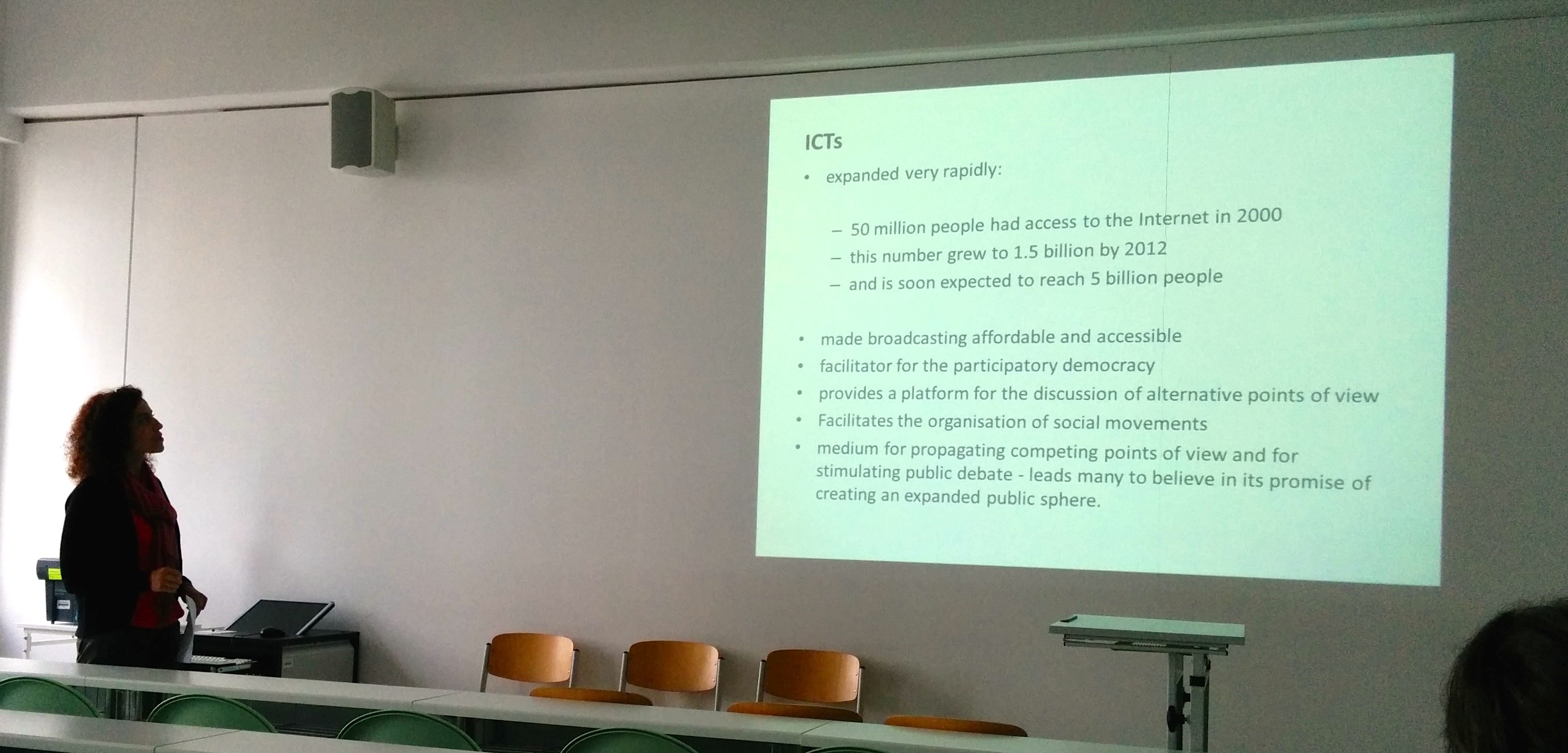What is capitalism? A kind of state? An institution? Some values? A power structure? Ideology? A Culture? What governs capitalism? Supply and demand Invisible hand Enclosure of land The drive to expand Market mechanism Class schism Racism The moral virtue of productivism. Innovation! Invest! Impress! Progress! Entrepreneurial quest for Technological success in Pursuit of profit. Laissez faire! Free market Free trade Free enterprise Freedom to buy Wage slavery And debt. Individual self-interest! Ambition Addiction Friction Cut throat competition Eat or be eaten Grow or die.
I think about capitalism as a moment. A blink in time. Organic life has thrived on earth for4 billion years. Modern humans have been walking around for some 200,000 years, looking a lot like you and me. That magical moment of capitalism dawned just 500 hundred years ago with European colonial expansion that enabled the rise of fossil-fueled industrial economies.
Vital to that rise are hierarchical systems of class, gender and race that interact with markets to engineer—and to justify—unequal exchange .Those who engage in markets from superior positions get more for their money. Ecological value flows toward them and wealth accumulates. Those who sell labor and other resources from inferior positions tend to get drained. Degraded. Deforested. Eroded. Impoverished. Exhausted.
Net cultural exchange has flowed in the other direction: capitalist practices, values and myths have been impelled far and wide, with scant return of other traditions. Cultural features of capitalism now seem so omnipresent that it is difficult to imagine and to forge alternatives. The most ingenious maneuver of modernity is to propagate the perception that this moment fills all horizons. As a result, political left and right, pro-growth and degrowth, slug it out in a confined capitalocentric arena.
Degrowth is denounced as ecofascism:ideologically-driven imposition that would force unwilling victims to sacrifice their God-given freedoms and betray innate self-interests. Capitalism, in contrast, is perceived as apolitical and morally neutral; markets, in particular, appear as timeless mechanisms through which all humans freely organize livelihoods and establish value. Karl Polanyi (1944) showed they are anything but. The commodification of labor and nature, together with the colonization of human practice and worldview by market-relations and money-value, are historical exceptions brutally imposed in 18th and 19th century Britain in efforts to “mold human nature” for industrial growth. Moving to late 20th century, David Harvey (2007) and others have exposed the formidable political incursions enacted to force expansion of “free” market relations into the most isolated parts of the world and the most intimate realms of human intercourse.
Our stubborn blindness to these and other historical details is enabled by certain architectural features of Western language, science and philosophy, notably: hierarchical binaries. Binaries of white over non-white, man over woman, human over other nature are engraved in the world in ways that make it difficult to question unequal exchange and exploitation, even from the position of those most exploited. The nature-culture binary marks thinking humans as superior over instinct-driven beasts; it also cements as “natural instinct” (therefore unchangeable) those aspects of human life that should not be questioned.
Today, the conviction that human biology is responsible for the insatiable drive to increase production and consumption is fostered by powerful cultural and scientific narratives. Featured myths include Homo economicus, the innately rational agent who always maximizes utility for personal gain; Adam Smith’s “natural propensity” to truck and barter, and that selfish gene that makes each of us crave control over resources and strive to take more than our share, condemning to tragedy any attempts at commons management.
Even the Anthropocene is portrayed as a result of human evolution! Teleological narratives surrounding climate change are exemplified by Steffen, Crutzen and McNeill (2007, 614) who write: “the first use of fire by our bipedal ancestors, belonging to the genus Homo erectus, occurred a couple of million years ago.” And“The mastery of fire by our ancestors provided humankind with a powerful monopolistic tool unavailable to other species, that put us firmly on the long path towards the Anthropocene.” As Malm and Holmberg (2014, 65) point out, just as the power to shape planetary climate passes from nature into the realm of humans, it is re-naturalized as innate “human nature.”
Antonio Gramsci (1971) taught us to beware the power of cultural constructs that make the status quo appear natural and inevitable. He also noted that historical crises can destabilize that power, opening transformative possibilities. Let’s seize this opportunity to shake up those myths.
Learning from all kinds of socionatural worlds expands our historical depth and cultural breadth. Archeological and ethnographic studies demonstrate that diverse hunter-gatherer-fisher cultures with extremely low societal metabolism and little or no market activity have thrived throughout human history and still today. Certainly they’ve impacted and co-constructed ecosystems in many ways– but there’s no sign of them changing the course of earth systems.
Evidence points to gradual expansion in per capita societal metabolism in some populations, starting around 10,000 years ago with the dawn of agriculture and urbanism, followed by much steeper increases just a few hundred years ago with the moment of capitalism, then a miraculous erection of supercharged growth in the late twentieth century, accompanied by skyrocketing atmospheric concentration of CO2.
Putting that latter moment in deeper historical and broader cultural context reveals the absurdity of claims that the ability to make fire (evolved two million years ago) inexorably led to human destruction of earth systems in the mid 20th century, when Geologists mark the beginning of the Anthropocene. It also challenges the common message that this new era was provoked by humanity as a whole (rather than a minority group or social system).
Cross cultural awareness can help us answer questions like: “How can humanity progress without capitalist motivation?” And, “How can non-expanding economies even sustain human society?” I’ve been learning with a network of scholar-activists working in 15 countries with communities trying to thrive equitably with low or decreasing societal metabolism. Some of the countries boast booming economic and material growth, others face postgrowth, or having missed out on growth altogether. Whereas many participants in this conference promote degrowth as a purposeful project, we also pay attention to degrowth as an unintended consequence, not necessarily welcomed, and not always recognized as a consequence of growth elsewhere. We find promising practices and meanings in long-sustained arrangements, among forced adaptations, and amid innovations toward new visions. You can learn about these diverse cultural paths in a forthcoming issue of the Journal of Political Ecology on Degrowth, Culture and Power.
The purpose of these studies is not to promote a return to primitive life or third world conditions. On the contrary, awareness of many possible modes of human existence widens horizons for building unprecedented futures. We turn now to the furnace where those futures are forged. We’ve made clear that behaviors and values that drive capitalist growth are not natural; they are artifacts of recent systems of culture and power. But there is something about human biology that is relevant here. Creatures interacting in the earth’s ecosystems display amazing characteristics evolved to meet their needs and to assure their descendants’ survival. Spotted salamanders use solar power, Atlantic wolf fish manufactures antifreeze, and African dung beetles navigate with the Milky Way. Cacti grow spines to defend their juicy stems against succulent-eaters, and nettles puncture predators (and passers-by), injecting poison into their wounds. Relative to those of other creatures, human bodies do not shine as particularly strong, quick or tough.
What does stand out is a biophysical capacity for symbolic thought and communication that enables usto collaboratively develop cultural systems that survive the individual organism and, in turn, shape the production of new generations of Homo sapiens, their habits, and their habitats.These uniquely human systems take the form of languages, religions, and sciences; production, kinship and gender systems. They are our most fundamental commons. That is where the growth imperative came from, and that is what we are already changing to support equitable and pleasurable degrowth.
This presentation was part of the plenary session "Capitalism and Degrowth". Watch this conference session on our YouTube Channel
Against the background of a looming ecological collapse and extreme socio-economic inequality, growth-critical scholars and activists debate various eco-social policies that can facilitate transitions towards genuinely environmentally sustainable and socially equitable societies. Such policies include work sharing, time-banks, job guarantees, complementary currencies and minimum income schemes....
From our project “Degrowth in Movement(s)“ Commons are products and resources that are created, cared for and used in a shared way in a great variety of forms. The term has increasingly come into use again over the past decades – “again“ because commons as concept and praxis are ancient and exist worldwide. Today, the research on the shared use of natural resources is mainly connected to the n...

By Chris Ward In the scientific paper session on technological solutions for a degrowth society, it was refreshing to hear someone (unsurprisingly an engineer) mention that the degrowth movement could do with more practical projects and methodologies to run alongside the theoretical discussions. The OAE Project: Open Data and Open Source software for a sustainable economy The OAE project a...